When tourists take over Munich in the fall for Oktoberfest, several lesser-known but equally beautiful German towns wait to be discovered. Trade Berlin’s cosmopolitan streets for these getaways to avoid crowds and uncover a side of the country not usually seen by tourists.
These are the underrated cities in Germany that haven’t been ruined by tourism yet:
Koblenz
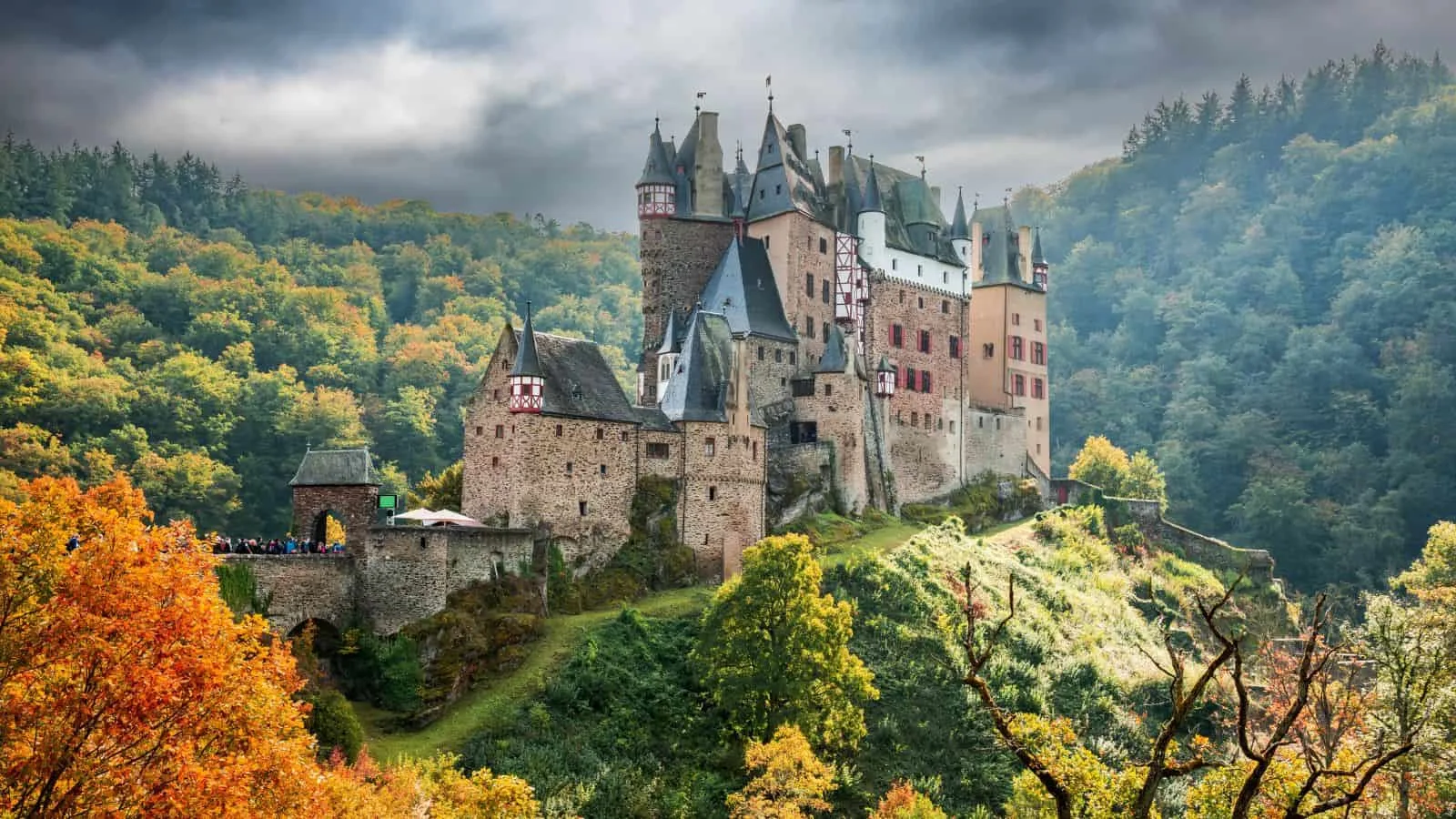
The Deutsches Eck, or “German Corner,” is where the mighty Rhine and Moselle rivers converge. Koblenz is located here, offering river views, a medieval Altstadt, and access to the picturesque Rhine Gorge. The city’s name is derived from the Latin word for confluence, which it truly is. Along with the Rhine and Moselle rivers, Koblenz is surrounded by endless vineyards and four mountain ranges.
Ride a cable car or hike to the Ehrenbreitstein Fortress, overlooking the Rhine Valley with sprawling grounds and museum exhibits. When you’re finished exploring the city, take a short drive away to Burg Eltz (Eltz Castle), one of the best things to do in Germany and one of the country’s most recognizable castles. For dinner, sit down at Altes Brauhaus for some German comfort food like sausages and schnitzels paired with a local beer or a glass of Moselle wine.
Freiburg im Breisgau
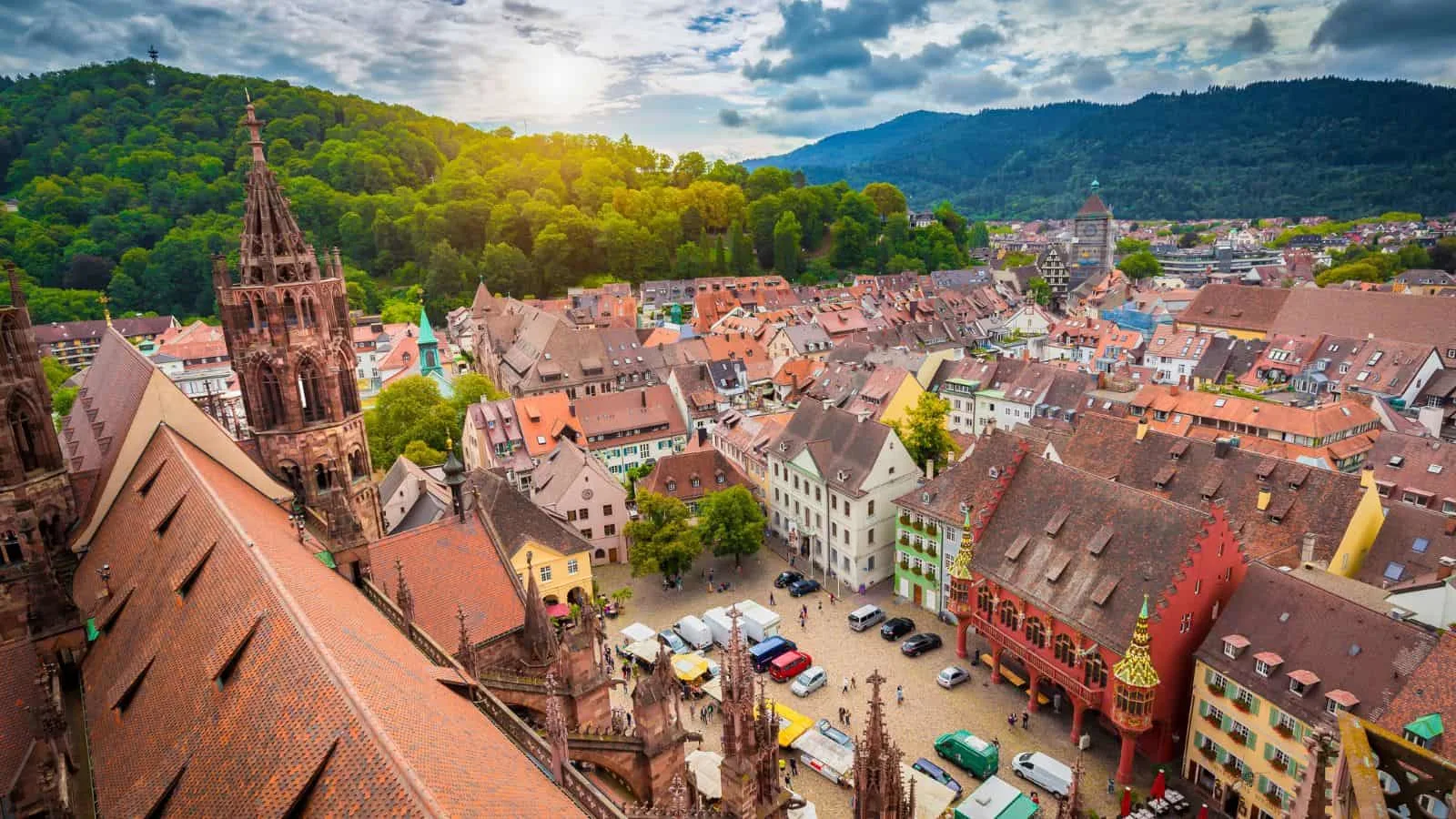
Freiburg im Breisgau is a gateway to the Black Forest in southwest Germany, one of the country’s most beautiful natural attractions. Münsterplatz, centered by the gothic Freiburg Minster, is the heart of Freiburg. Climb 116 meters to the top of the Freiburg Minister for views stretching to the Vosges Mountains in France, then grab a bratwurst from one of the market stalls below—the Münsterplatz market is filled with local food vendors. After, wander the Altstadt (Old Town) for more medieval architecture and history.
Explore the Black Forest by trekking up Schauinsland for epic views or wandering through the dense woods of the Feldberg. Finish your day of hiking with a slice of Schwarzwälder Kirschtorte (Black Forest cake) in the very place it was invented.
Heidelberg
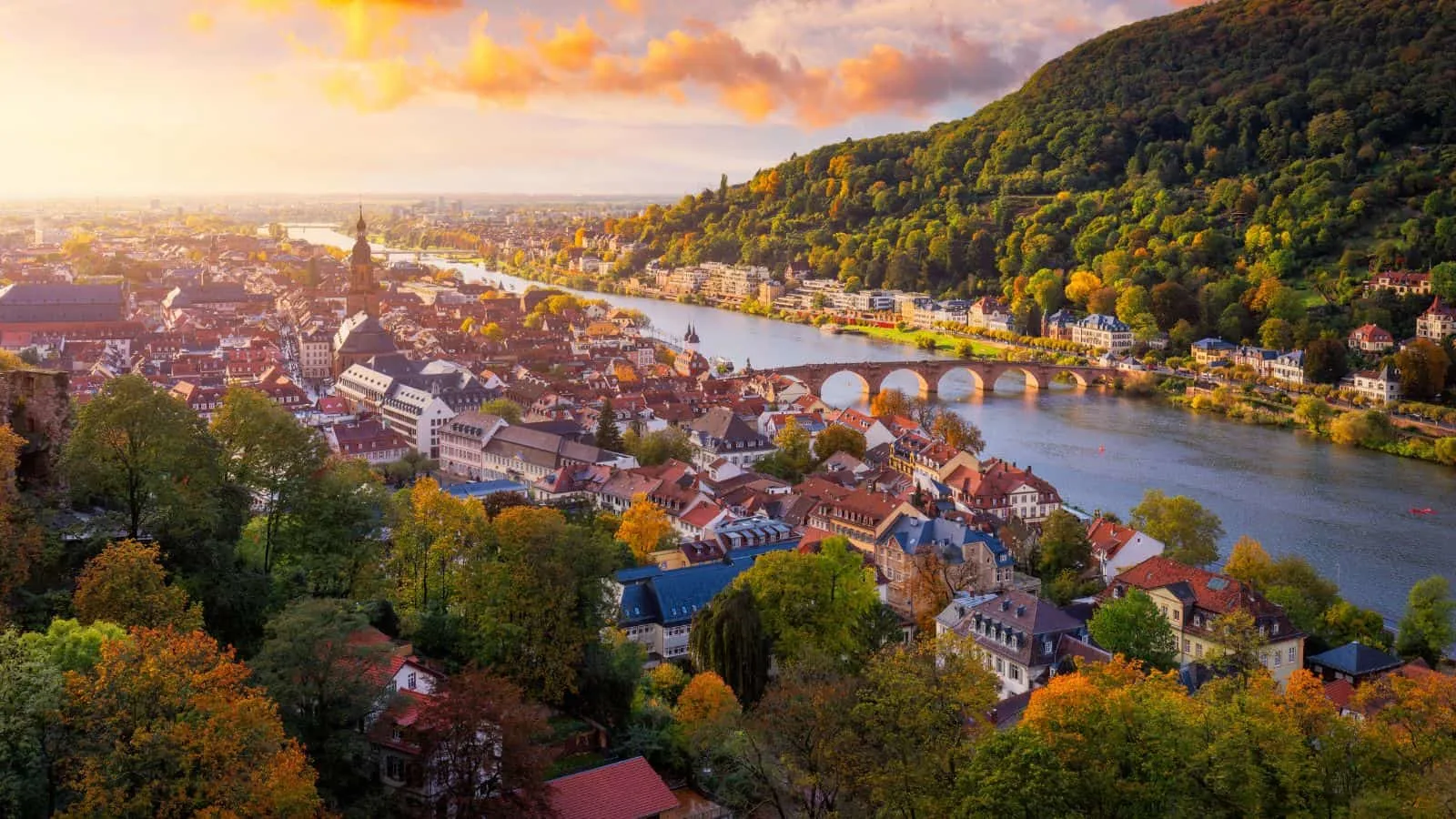
Heidelberg Castle, perched above the Neckar River, is something straight out of a movie. Accessible by hiking the Philosopher’s Walk or taking the funicular, the 800-year-old castle cements this city as Germany’s ultimate romance destination—minus the crowds of more popular destinations.
At the castle, you’ll find the Heidelberg Tun, the world’s largest wine barrel. This city is in the thick of German wine country, and Weingut Clauer, a family-run vineyard just outside the city, barrels some of the best. In the Altstadt (Old Town), Vetter’s Alt Heidelberger Brauhaus welcomes beer lovers for local brews and some hearty German fare. While in the Altstadt, walk Hauptstrasse, Germany’s longest pedestrian street, and work your way to Café Knösel, one of the city’s oldest cafés, where you can try a Studentenkuss, a chocolate treat that’s been a Heidelberg specialty since 1863.
Leipzig
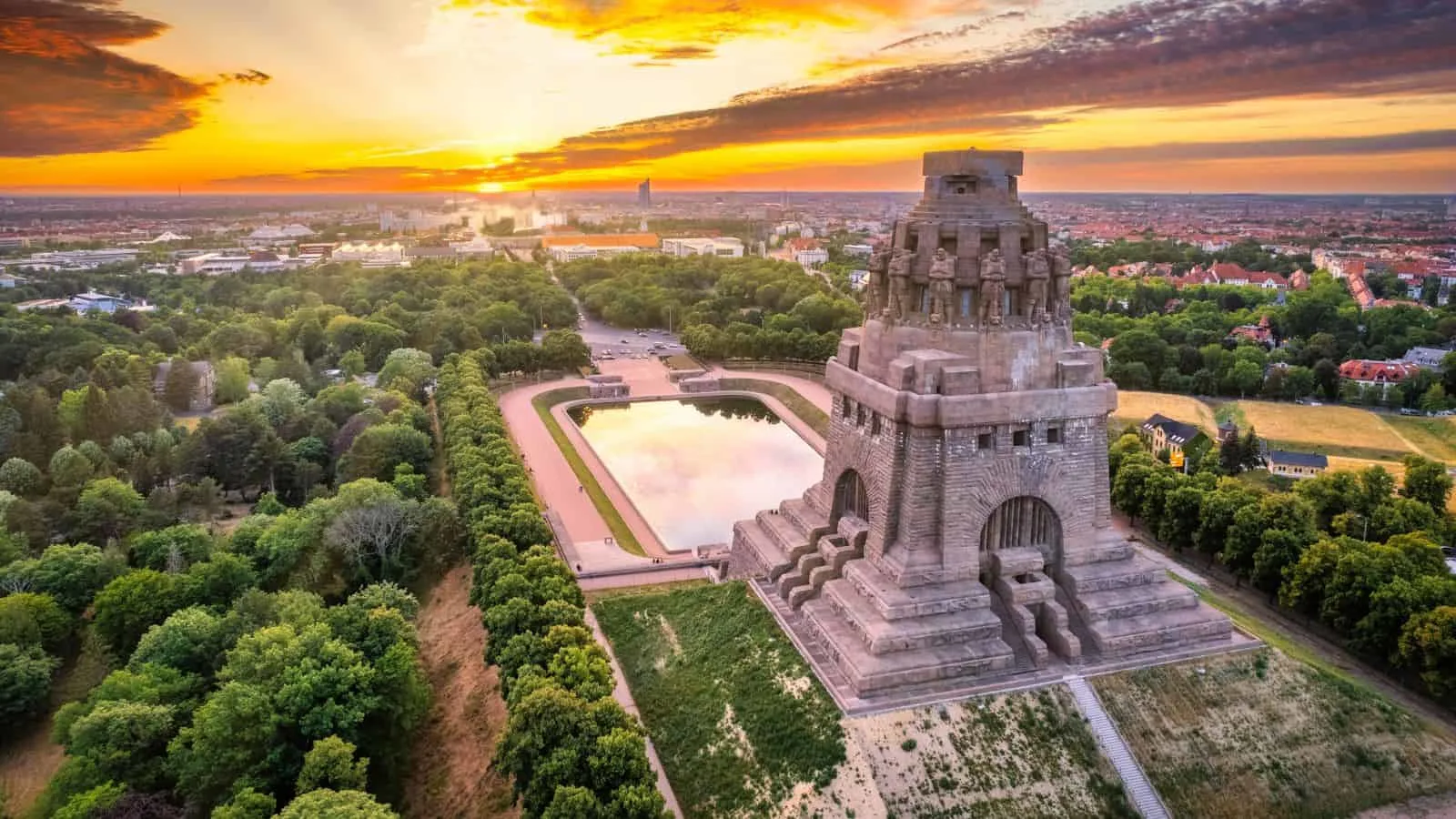
Leipzig is Berlin’s cooler, artsier cousin, as evidenced by Spinnerei, an old cotton mill turned into a contemporary art space with galleries, studios, and industrial architecture. Bach basically called Leipzig home, but these days, the edgy punk and techno of Conne Island dominate the city’s music scene.
Rebellion is in the city’s DNA: St. Nicholas Church is where the peaceful Monday Demonstrations started in 1989, leading to the fall of the Berlin Wall. After seeing this pivotal landmark, climb up Monument to the Battle of the Nations (Völkerschlachtdenkmal) for a killer view of the city.
Bremen
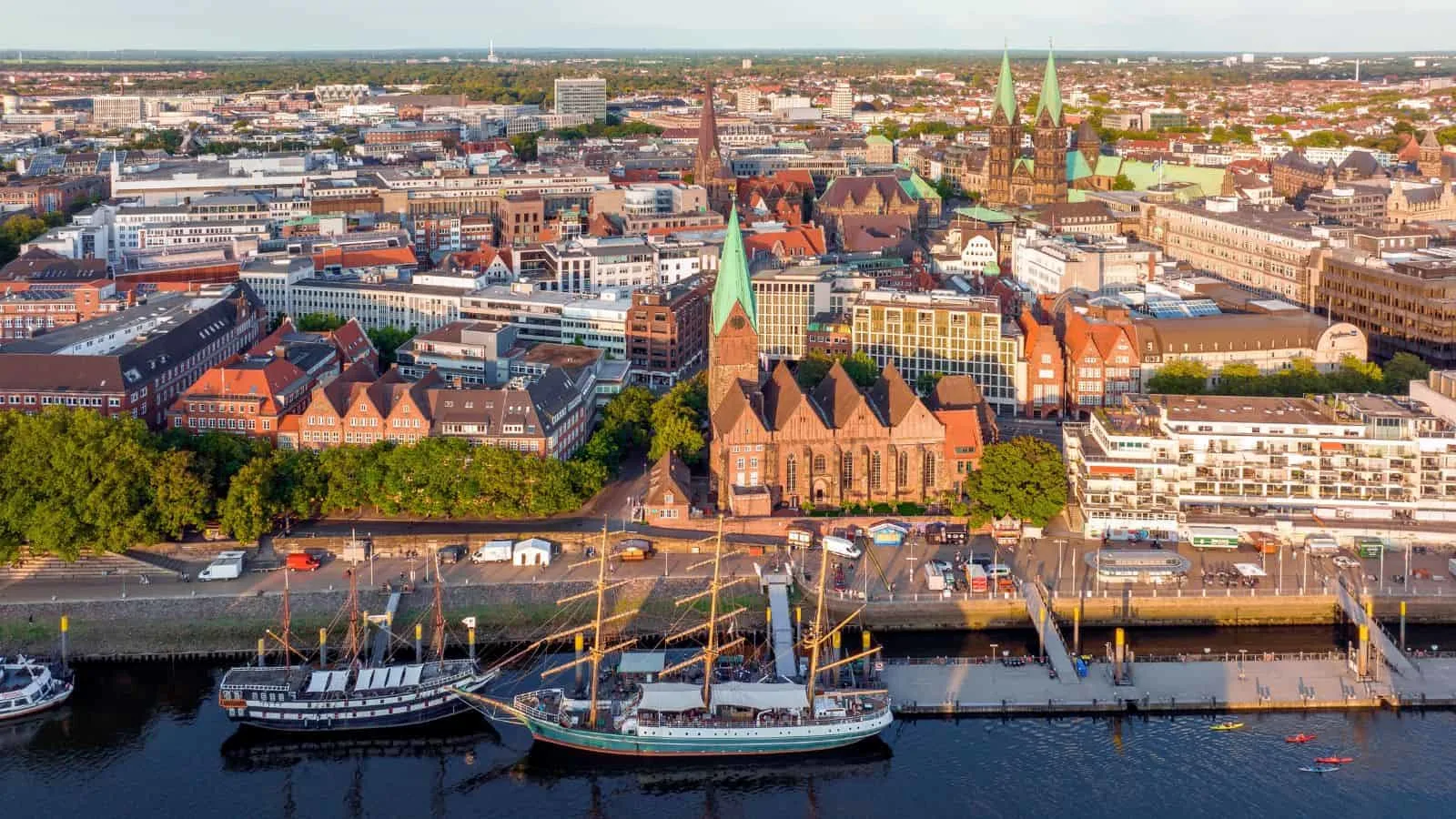
Bremen’s medieval Schnoor Quarter, the UNESCO-listed Town Hall, and the futuristic Universum Science Center may not look like they belong in the same city, but this coming together of old and new describes this German city to a T. Marktplatz is where most visitors begin their journey, anchored by the Rathaus (Town Hall) and the Roland Statue. Inside, the Bremen Ratskeller is where you’ll find Germany’s oldest wine cellar.
Stroll down the Böttcherstraße, an art deco dream lined with quirky buildings, artisan shops, and the Paula Modersohn-Becker Museum. Afterward, grab a beer at Beck’s Brewery, where you can tour, learn about the brewing process, and imbibe at a tasting. Viertel, the city’s bohemian district, offers a more lively nightlife experience as locals crowd in for craft cocktails at Lila Eule and dance the night away at Tower Musikclub.
Regensburg
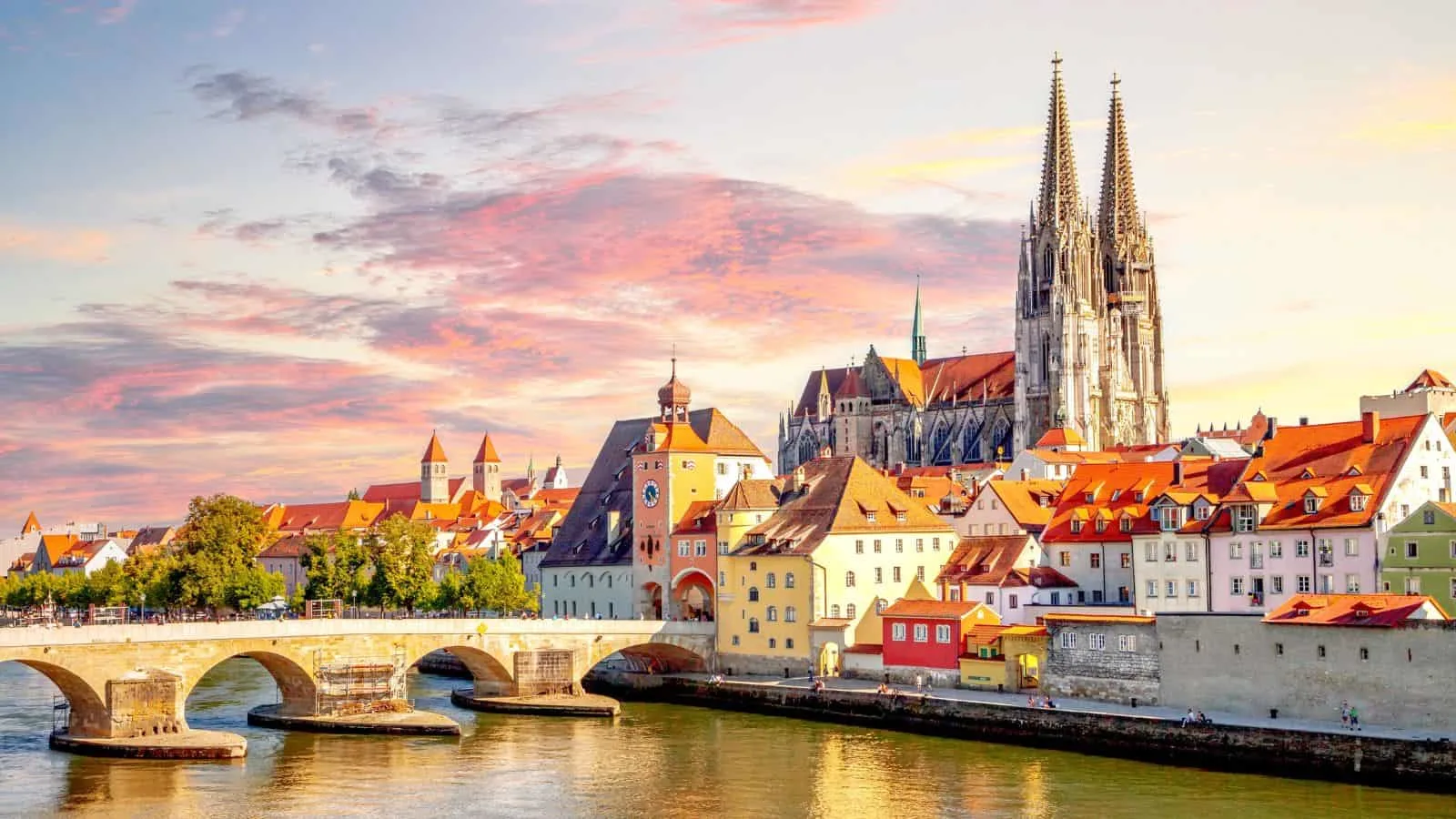
Situated along the Danube River, Regensburg is one of touristy Bavaria’s unsung gems. Over 1,500 historic buildings are crammed into the medieval center of this UNESCO World Heritage city, whose skyline is marked by the Regensburg Cathedral’s twin spires.
Be the main character in your Bavarian fairy tale at the Thurn und Taxis Palace. The guided tour takes you through lavish rooms for a peek into the life of the German aristocracy. Outside the city, the Walhalla, a neo-classical hall of fame overlooking the Danube, is Bavaria’s answer to the Parthenon, built to honor great Germans from history.
Augsburg
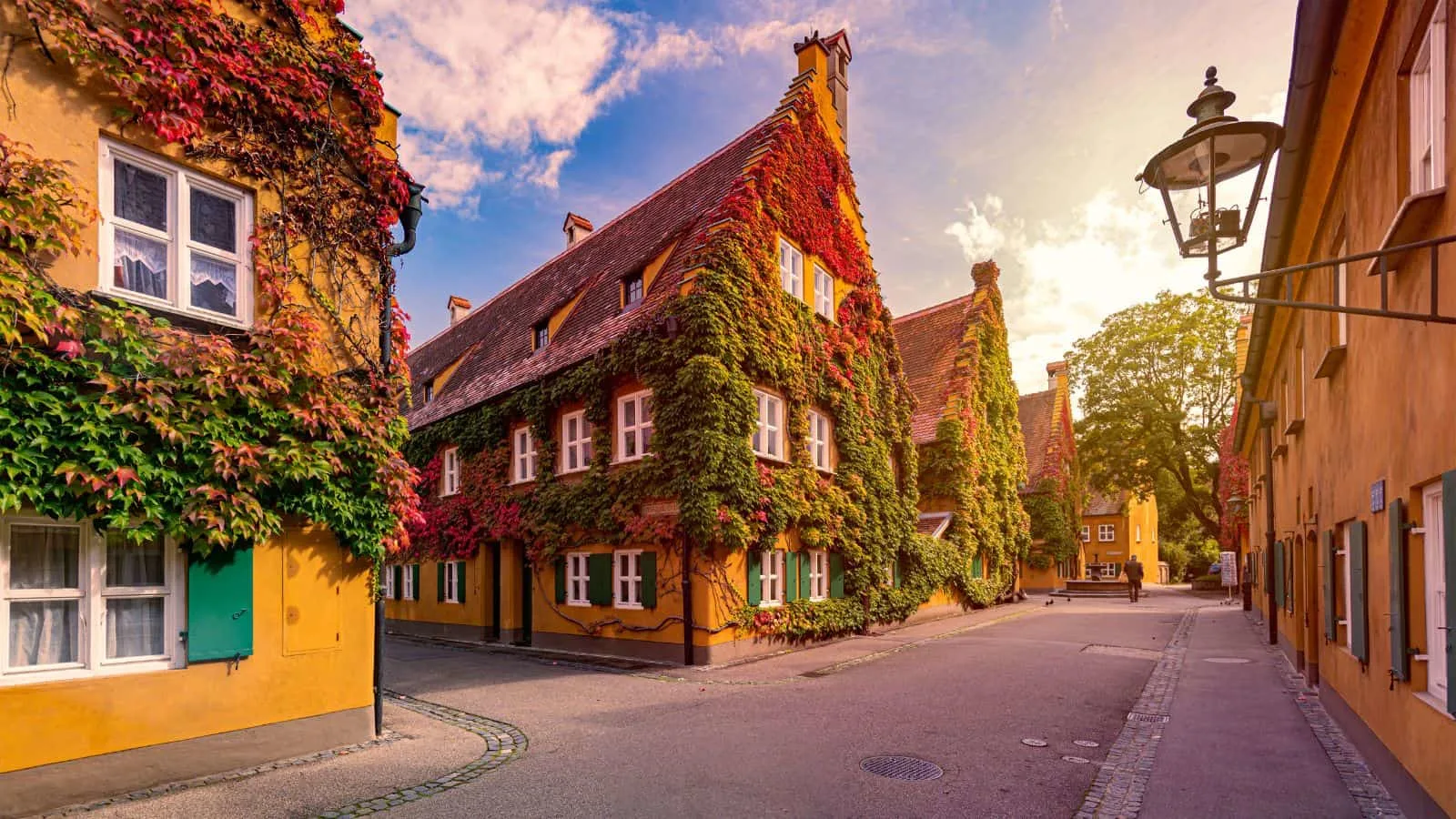
Augsburg is one of Germany’s oldest cities, founded by the Romans over 2,000 years ago. It’s a mishmash of Renaissance, Baroque, and Rococo architecture, home to the historic Fuggerei social housing complex, and has connections to the Fugger merchant family. Augsburg holds on to its history—at the Fuggerei, rent is still just one Rhenish guilder a year (about 88 euro cents) and a daily prayer for the Fugger family.
The heart of Augsburg is the Rathausplatz, home to the gilded Town Hall, one of the most significant Renaissance buildings north of the Alps. Next door is the Perlach Tower, where you can observe panoramic views and hear the bells ring every hour. Rathausplatz buzzes during the Augsburger Plärrer, the city’s answer to Oktoberfest. Think massive beer tents, traditional music, and true Bavarian culture without the overwhelming crowds of Munich.
Mainz
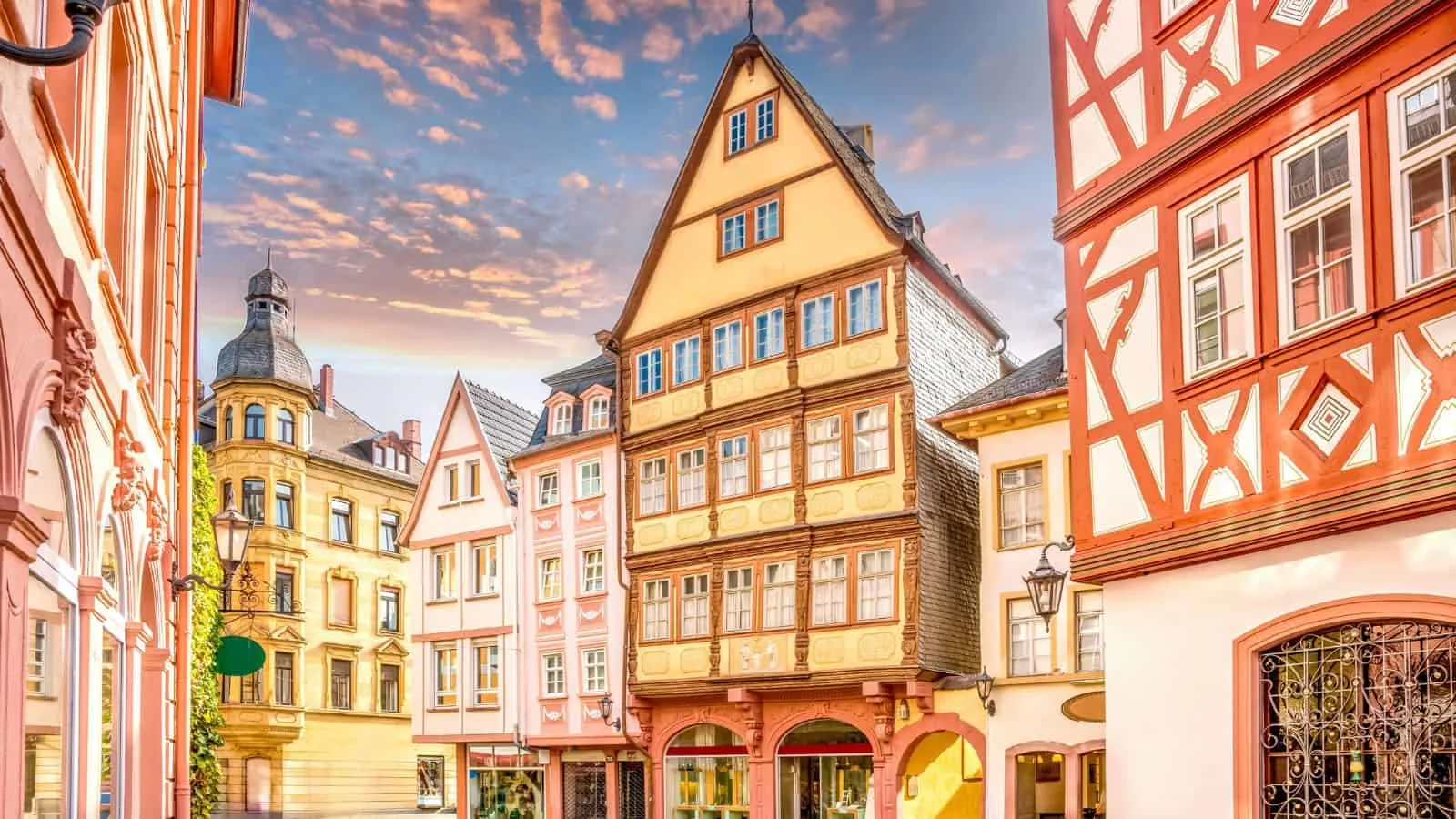
Famous for its wine culture and as the birthplace of Johannes Gutenberg, Mainz is a Roman escape on the banks of the Rhine. Start at the Mainz Cathedral, standing tall since 975. The Gutenberg Museum is another must-check-off, dedicated to the father of printing and featuring original Gutenberg Bibles on display. When you’re ready to eat, get a table at Heilig Geist, a former hospital-turned restaurant. Seasonal, local ingredients are served up in a building that’s over 800 years old.
This city is the capital of the Rhineland-Palatinate region, which means it’s in the middle of Germany’s most famous wine country. Visit one of the many local wine taverns or “Weinstuben,” like Weinhaus Michel, to sip on some of the world’s best Rieslings. Pair your wine with some regional specialties like Spundekäs, a creamy cheese spread, or Handkäse mit Musik, a local cheese dish with a tangy marinade.
Essen
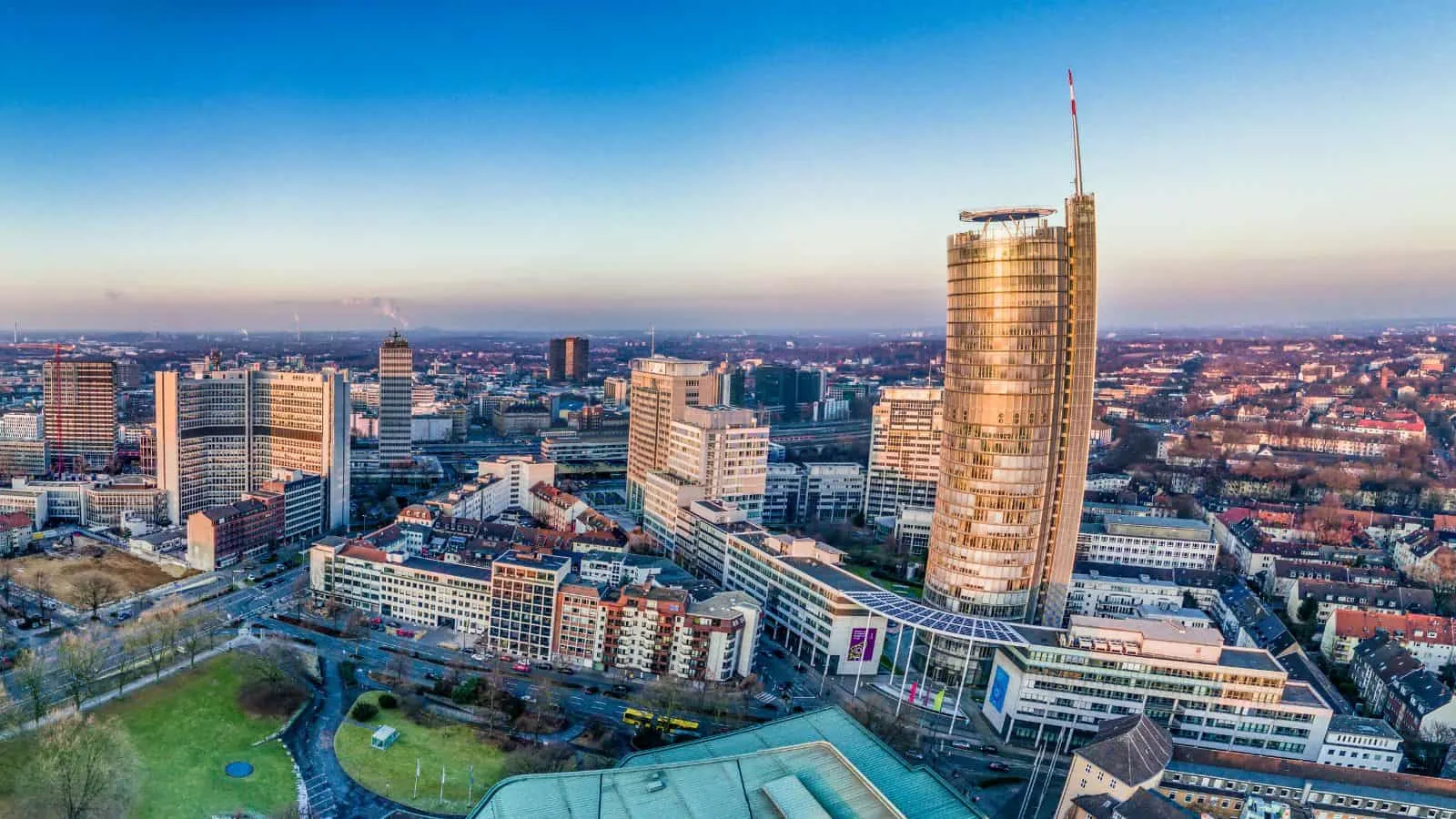
Once an industrial powerhouse, Essen has reinvented itself with green spaces like the expansive Grugapark, cultural sites like the UNESCO-listed Zollverein Coal Mine and Ruhr Museum, and a burgeoning art scene.
The Museum Folkwang is where you’ll want to spend a good chunk of your day, losing yourself in one of the finest collections of modern and contemporary art in Germany, which includes works by Van Gogh, Picasso, and Monet. After, catch a film at the Lichtburg, Germany’s oldest cinema, where you can catch indie films and cult classics in a setting that embodies old-school glamour.
Würzburg
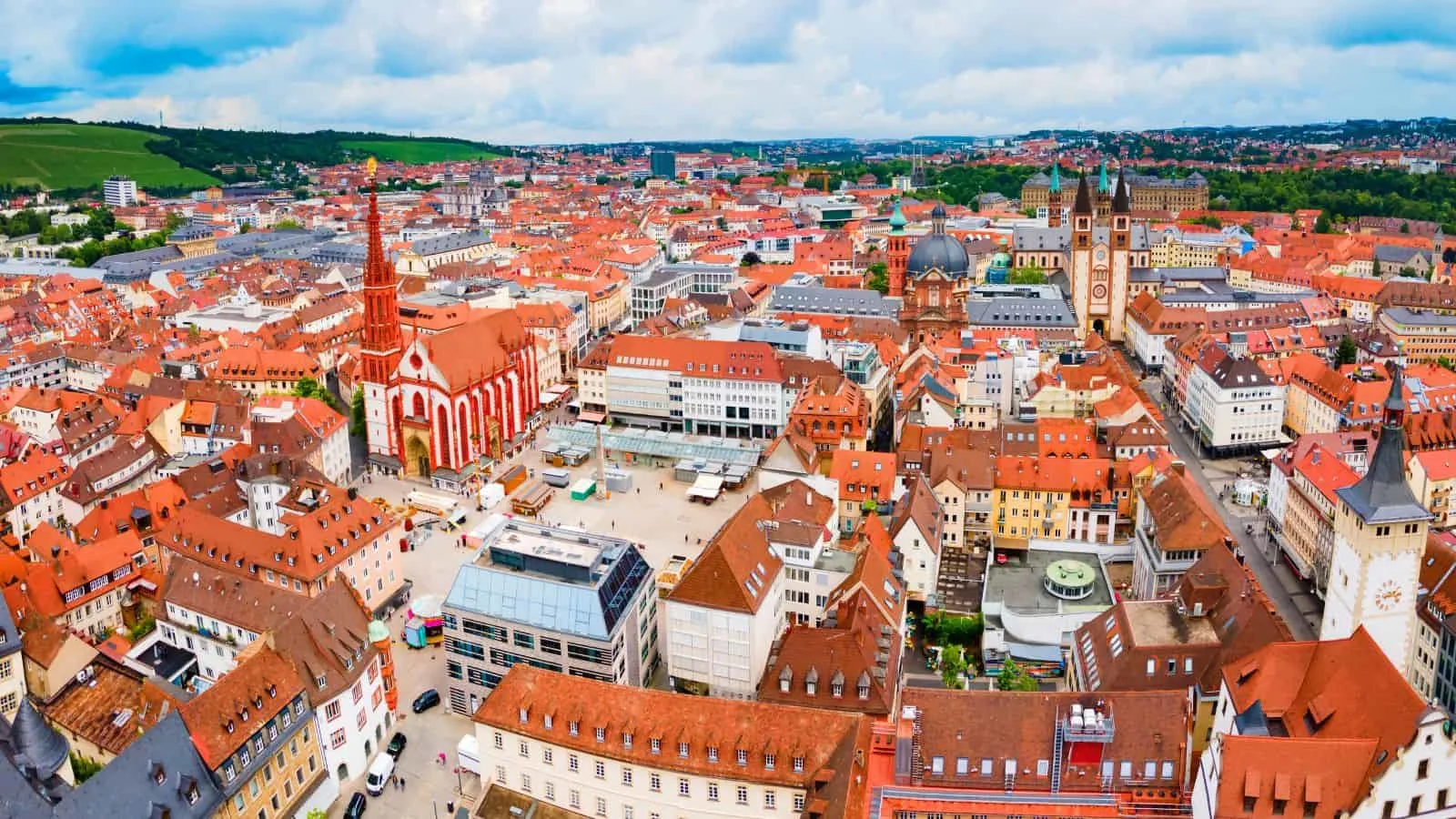
Traipsing across Bavaria and Baden-Württemberg, Würzburg is a key stop on Southern Germany’s Romantic Road. The city is home to the stunning Würzburg Residence, a UNESCO World Heritage site known for its baroque and rococo architecture. Here, you’ll see the world’s largest ceiling fresco, painted by Giovanni Battista Tiepolo. Wander through rooms of over-the-top baroque design, with gilded stucco, marble columns, and enough chandeliers to light up a small country. The magnificent palace hosts the Würzburg Mozart Festival each summer, filling the halls with beautiful music.
Würzburg is in the middle of one of Germany’s most famous wine regions, Franconia, where the wines are crisp, dry, and served in those quirky, round Bocksbeutel bottles. Head to the Bürgerspital, one of the city’s oldest and most prestigious wine estates, for a tasting, then stroll across the Alte Mainbrücke, Würzburg’s iconic stone bridge lined with statues of saints, where you can continue sipping while taking in views.
Kassel
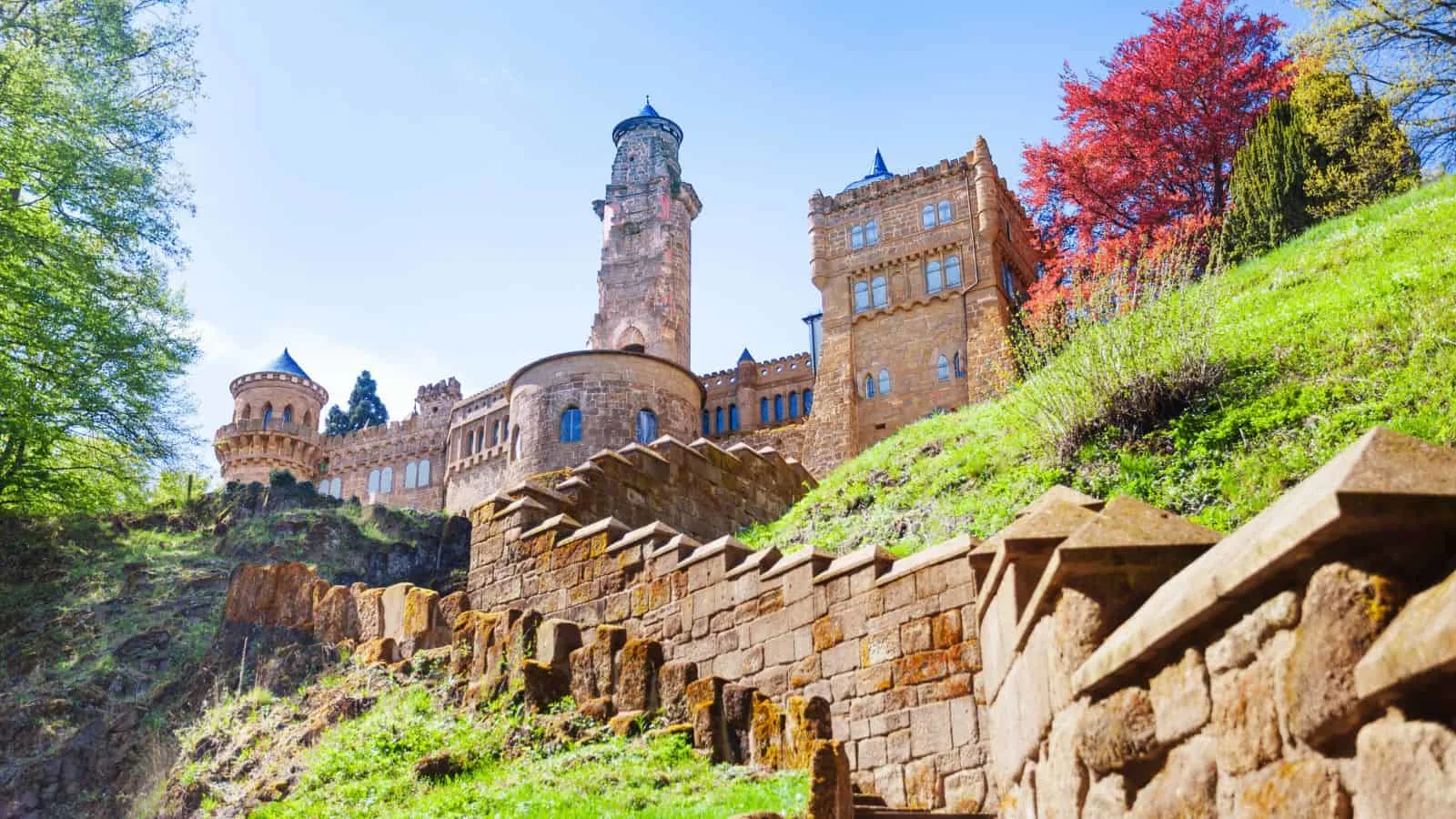
Kassel is home to documenta, one of the world’s most important contemporary art exhibitions that only happens once every five years. The city transforms into a large gallery where cutting-edge art invades parks, palaces, and random street corners. One of the city’s most important parks is Bergpark Wilhelmshöhe, a UNESCO World Heritage site with water features that are a fabulous display of 18th-century engineering. Water rushes down the hillside, creating a series of spectacular cascades and fountains, all culminating at the foot of the Hercules monument.
Kassel is also the epicenter of the Brothers Grimm country, where the famous storytellers lived and worked. Take a stroll down the German Fairy Tale Route, which winds through the city and beyond. The Grimmwelt museum is a must-visit, where you can dive into the world of fairy tales, complete with interactive exhibits that bring those timeless stories to life.
Münster
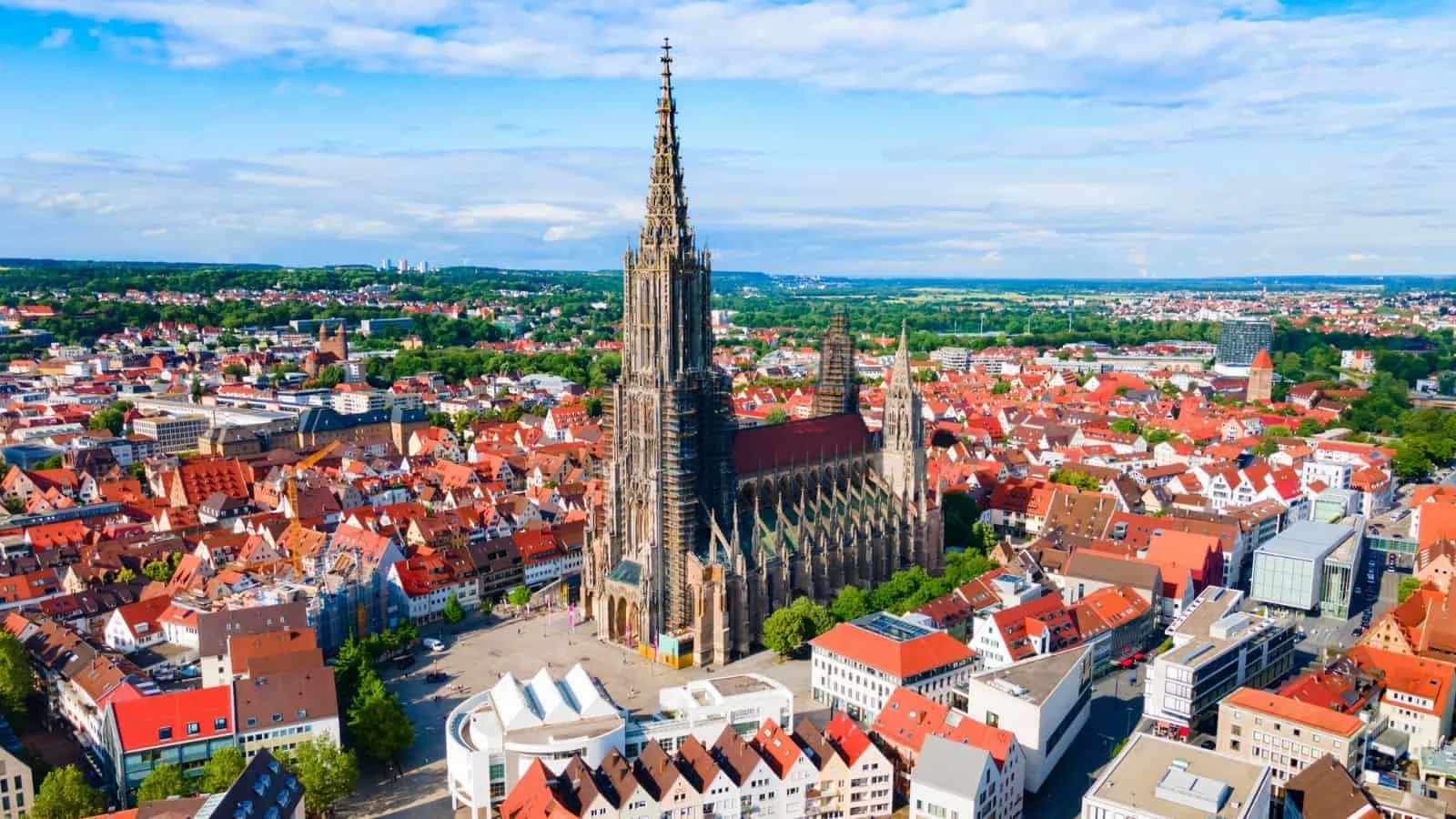
A university town with a lively atmosphere, Münster boasts beautiful churches, a charming old town, and a rich history dating back to the Peace of Westphalia. The Old Town’s Prinzipalmarkt is at the center of Münster’s appeal—a stunning street lined with Gothic arcades and gabled houses. Pop into St. Paul’s Cathedral to marvel at the Astronomical Clock, a 16th-century masterpiece.
Get a feel for Münster’s youthful side at Kreativkai, the city’s old harbor turned cultural district, where warehouses have been transformed into art spaces, theaters, and trendy hangouts. Leaning further into Münster’s creative side, the city’s famous Skulptur Projekt occurs every ten years, turning it into an open-air museum with contemporary sculptures and installations popping up in unexpected places.
Trier
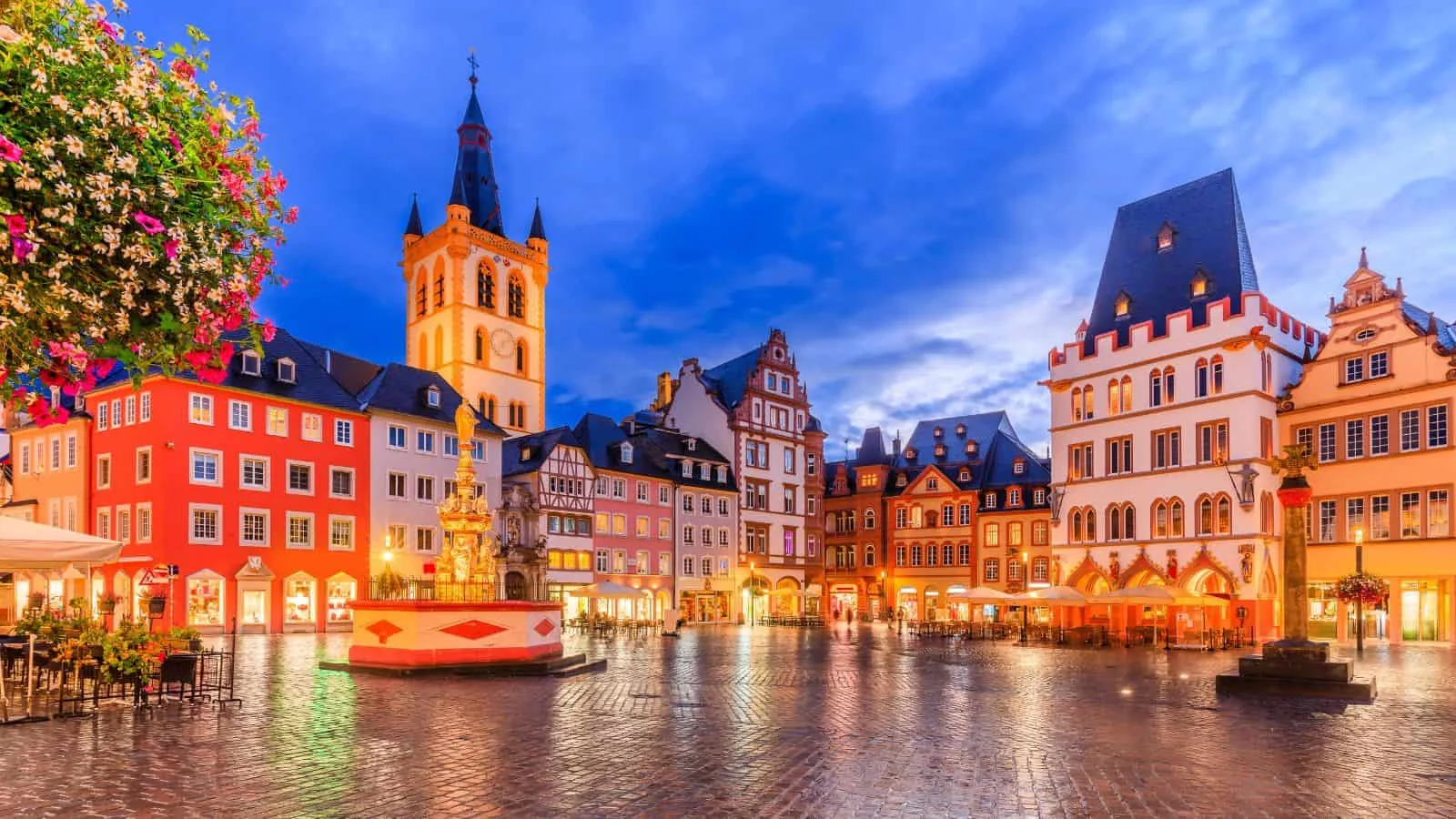
Germany’s oldest city, Trier, is filled with Roman ruins, including the Porta Nigra and Roman baths, offering a fascinating glimpse into ancient history. The Constantine Basilica is another example of this, standing since the 4th century.
The Moselle River winds through Trier, giving you the perfect excuse to kick back with a glass of local wine. The Hauptmarkt, filled with produce stalls and florists six days a week, is another prime people-watching spot.
Osnabrück
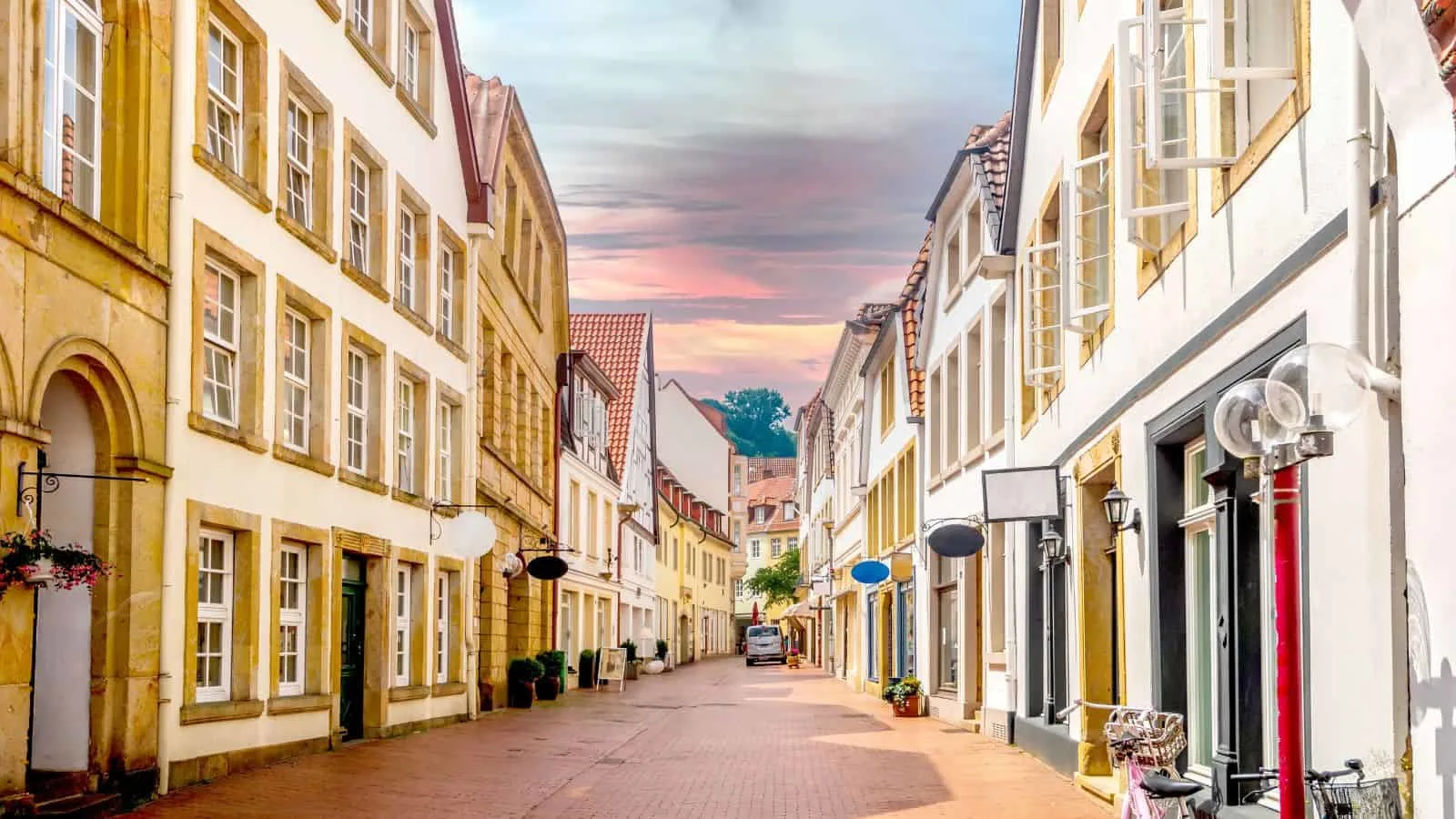
Known for its role in the Peace of Westphalia signing, which ended the Thirty Years’ War, Osnabrück combines historical significance with a vibrant arts scene and beautiful surrounding nature.
The Felix-Nussbaum-Haus is a top spot for art lovers, with thought-provoking exhibitions dedicated to the works of Jewish painter Felix Nussbaum. Outside of the city, the Teutoburg Forest welcomes adventure travelers with hiking and biking. Fuel up by trying the local specialty, Pumpernickel, in one of the bakeries around town.
Rostock
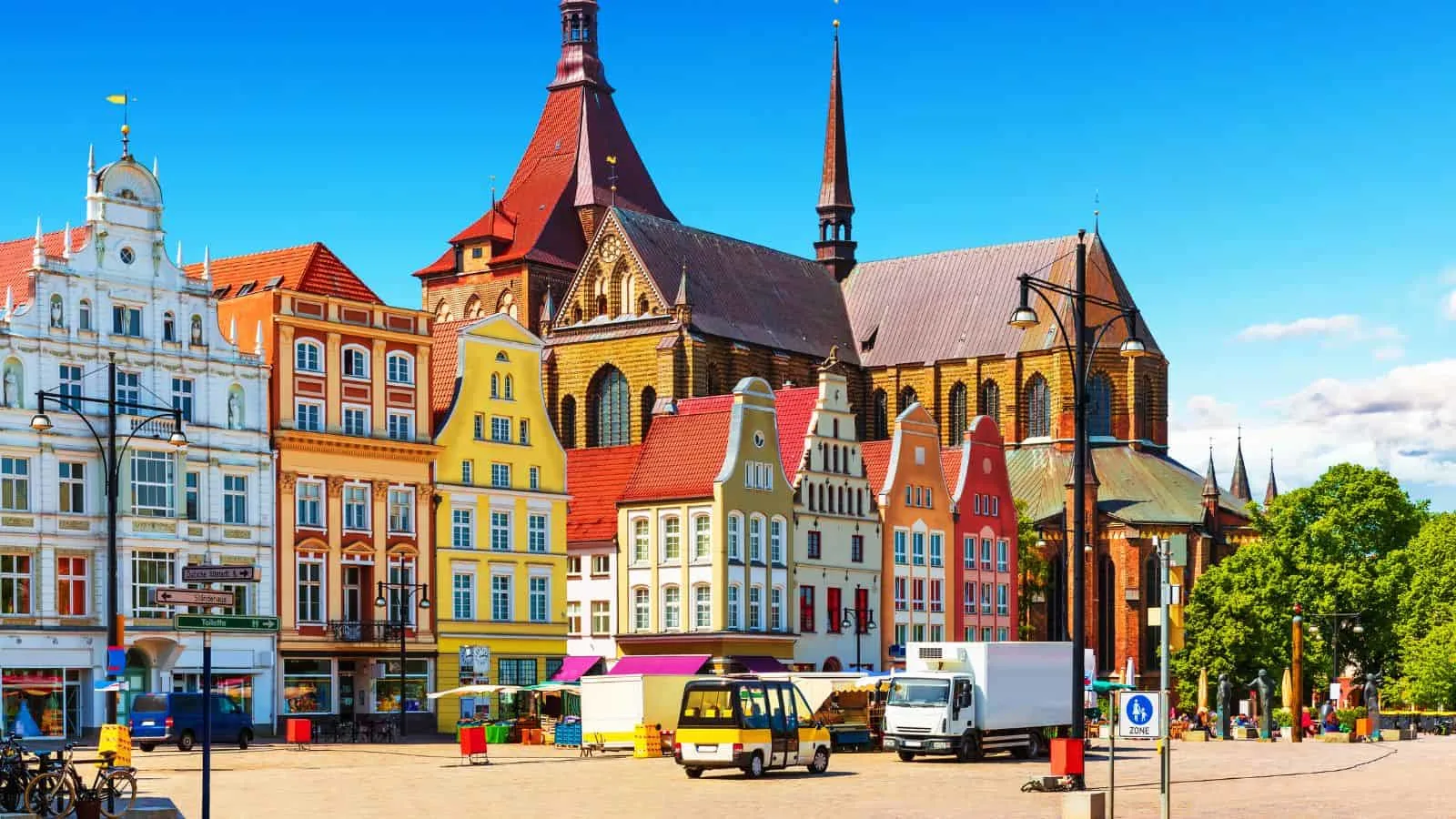
A Hanseatic city on the Baltic Sea, Rostock features medieval architecture, a bustling harbor, and nearby sandy beaches for a quieter coastal escape. Warnemünde Beach is where locals go to unwind and watch the waves roll in. Plus, there’s the lighthouse and Teepott building that make for idyllic views.
Inland, Gothic brick buildings and ancient churches cover the city. Step into St. Mary’s Church to see its astronomical clock dating back to the 15th century or climb aboard a ship at the Shipbuilding and Maritime Museum to learn about Rostock’s maritime history. When you’re ready for a bite, grab a Fischbrötchen (fish sandwich) at the harbor for a taste of local seafood. Consider timing your visit with the Hanse Sail, one of the largest maritime festivals in the world, with tall ships, traditional crafts, and a party atmosphere that takes over the city every summer.
Potsdam
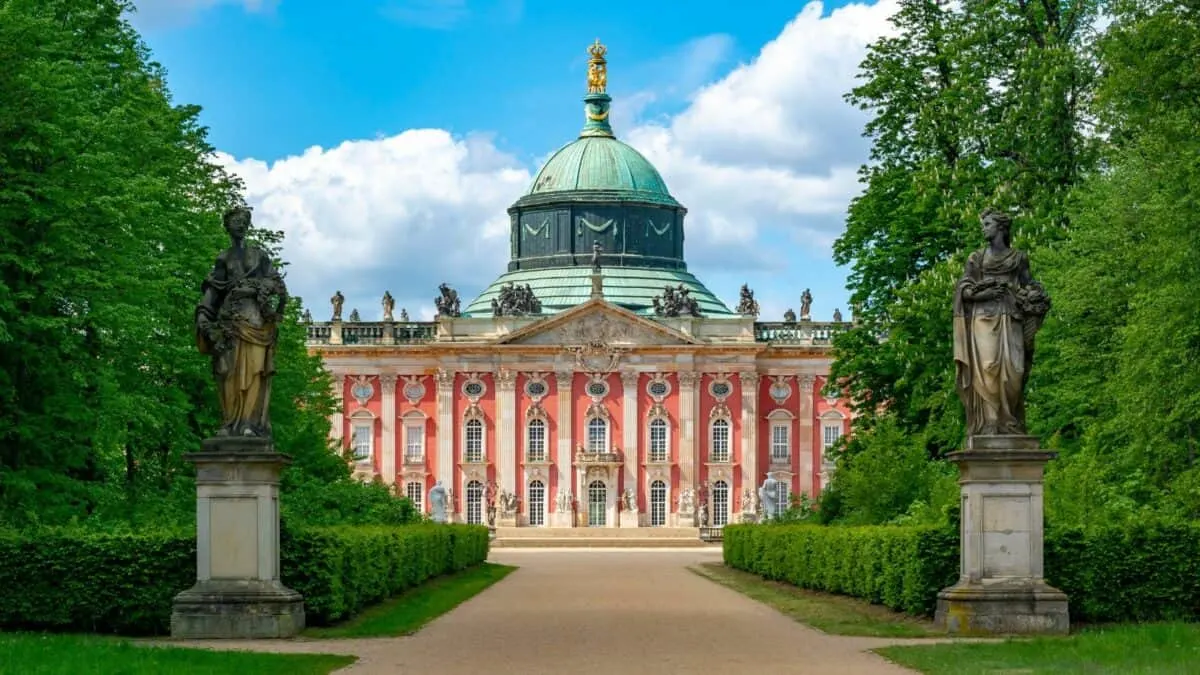
Built by Frederick the Great as his summer escape, Sanssouci, a Rococo palace in Potsdam, is basically the Versailles of Germany. This isn’t the only palace in Potsdam. The New Palace is Sanssouci’s bigger, bolder cousin, grand halls and opulent interiors. Then there’s Cecilienhof, which is where the Potsdam Conference took place at the end of World War II, shaping the future of Europe.
Though Potsdam is just outside of Berlin, you might think you’re in Amsterdam when stepping into the Dutch Quarter’s red brick buildings. A short drive from the Dutch Quarter, the Glienicke Bridge, aka the Bridge of Spies, gives visitors a glimpse into Potsdam’s involvement in Cold War Espionage.
Görlitz
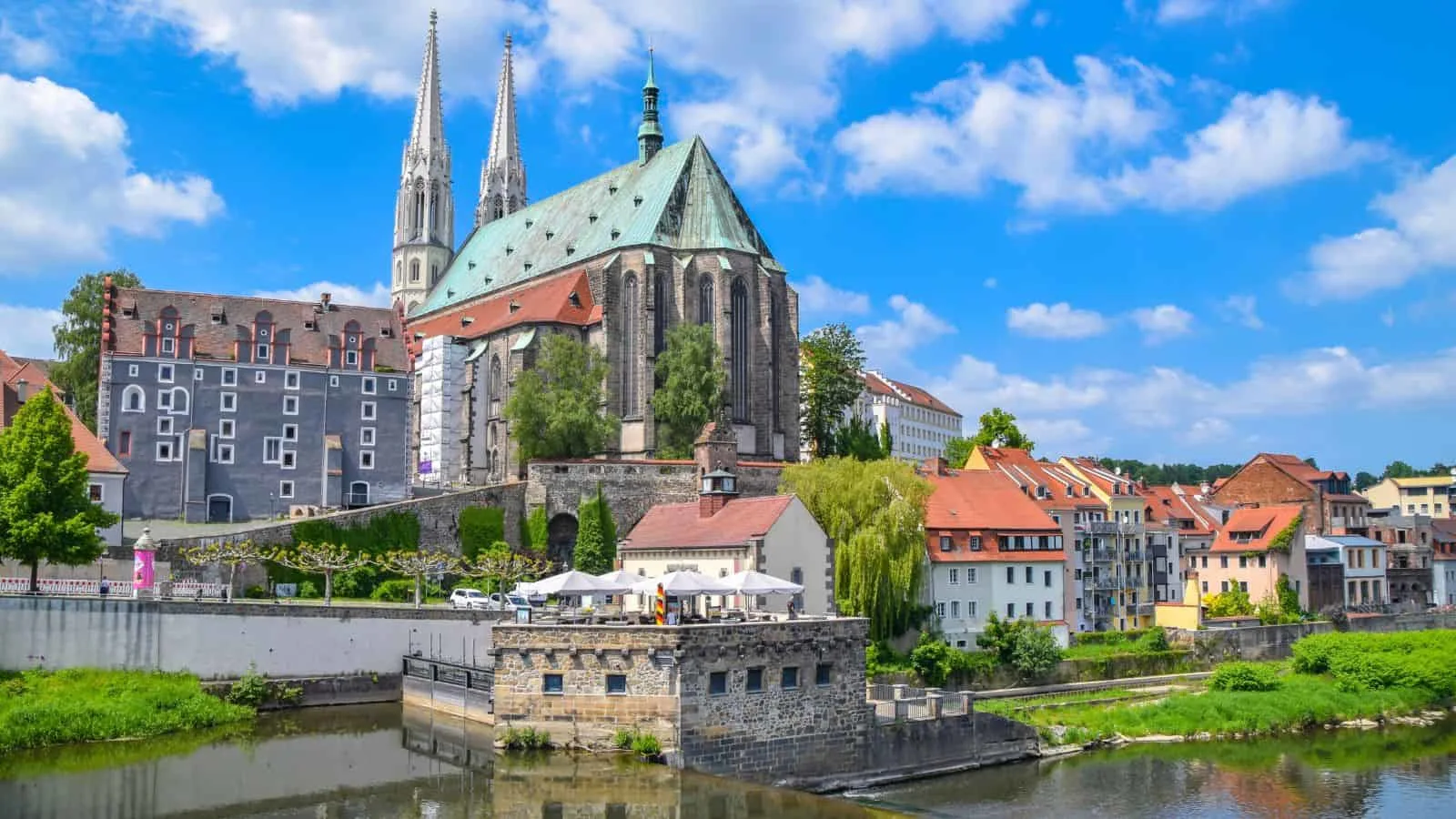
This border town with Poland has one of the best-preserved old towns in Germany, featuring over 4,000 heritage buildings spanning Gothic, Renaissance, and Baroque styles. This pastel city has Hollywood ties, previously acting as a movie set for films like “The Grand Budapest Hotel” and “Inglourious Basterds.”
Görlitz is a city that’s been shaped by its position at the crossroads of Europe. Take a stroll across the Neiße River, and you’re suddenly in Poland. After, climb to the top of the Church of St. Peter and Paul for a view of the city from above. Inside, the church is just as impressive, with its intricate altars and stunning stained glass that floods the place with light.
Bonn
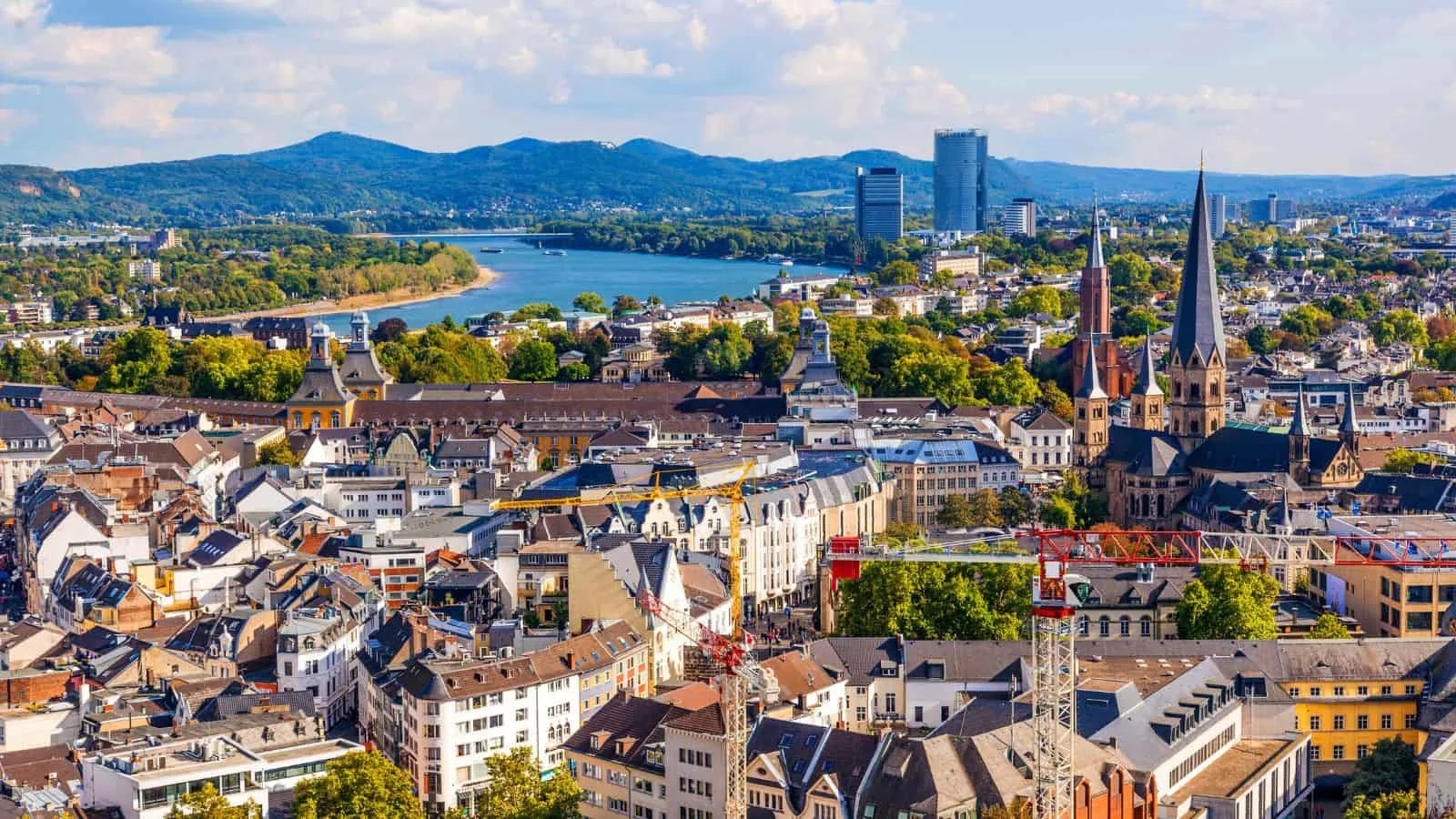
The former capital of West Germany, Bonn, is Beethoven’s birthplace and a scenic location along the Rhine River. The city is basically a homage to the great composer. The Beethoven House Museum is packed with fascinating artifacts, including some of his original manuscripts and instruments. If you time your visit right, you can catch the Beethovenfest, a world-class music festival that turns the city into a mecca for classical music lovers every year.
Explore the remains of a Roman fortress at the Bonn Minster, one of the oldest churches in Germany before making your way to Poppelsdorf Palace, which has relaxing gardens for a leisurely afternoon in the sun. The palace is also home to the University of Bonn’s mineralogical museum, one of the oldest museums in the Rhineland, with four different exhibition halls and over 6,000 objects.
Underrated countries in Europe offer Germany’s charm without its crowds
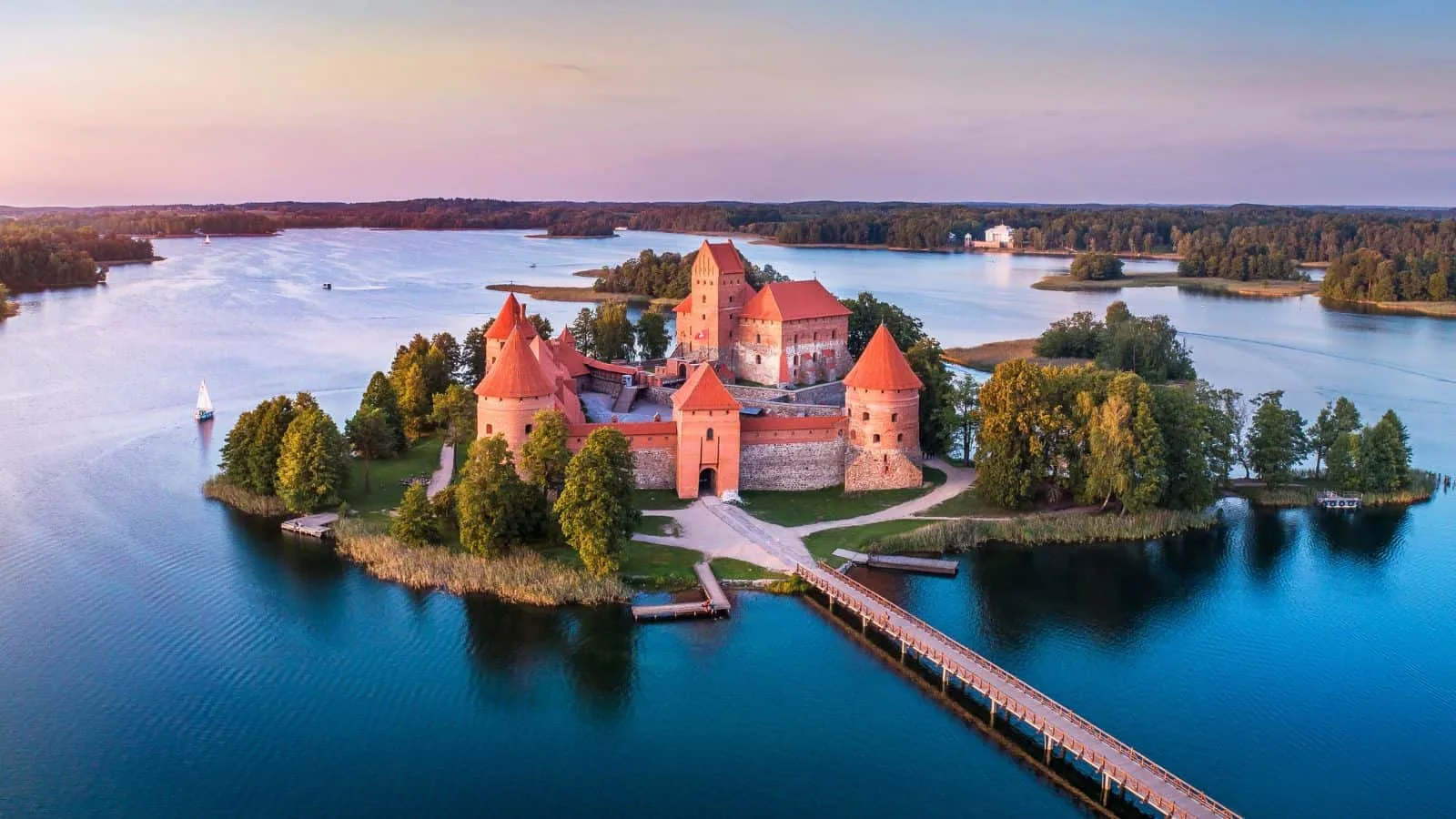
With visitors standing shoulder-to-shoulder at landmarks like the Eiffel Tower and Trevi Fountain, Europe’s biggest import might just be crowds. Embrace the continent’s romance and lavish style without tourists in its lesser-traveled but equally impressive countries.
16 Underrated Countries In Europe To Visit Before Tourism Ruins Them
There’s no better way to see Europe than by driving it
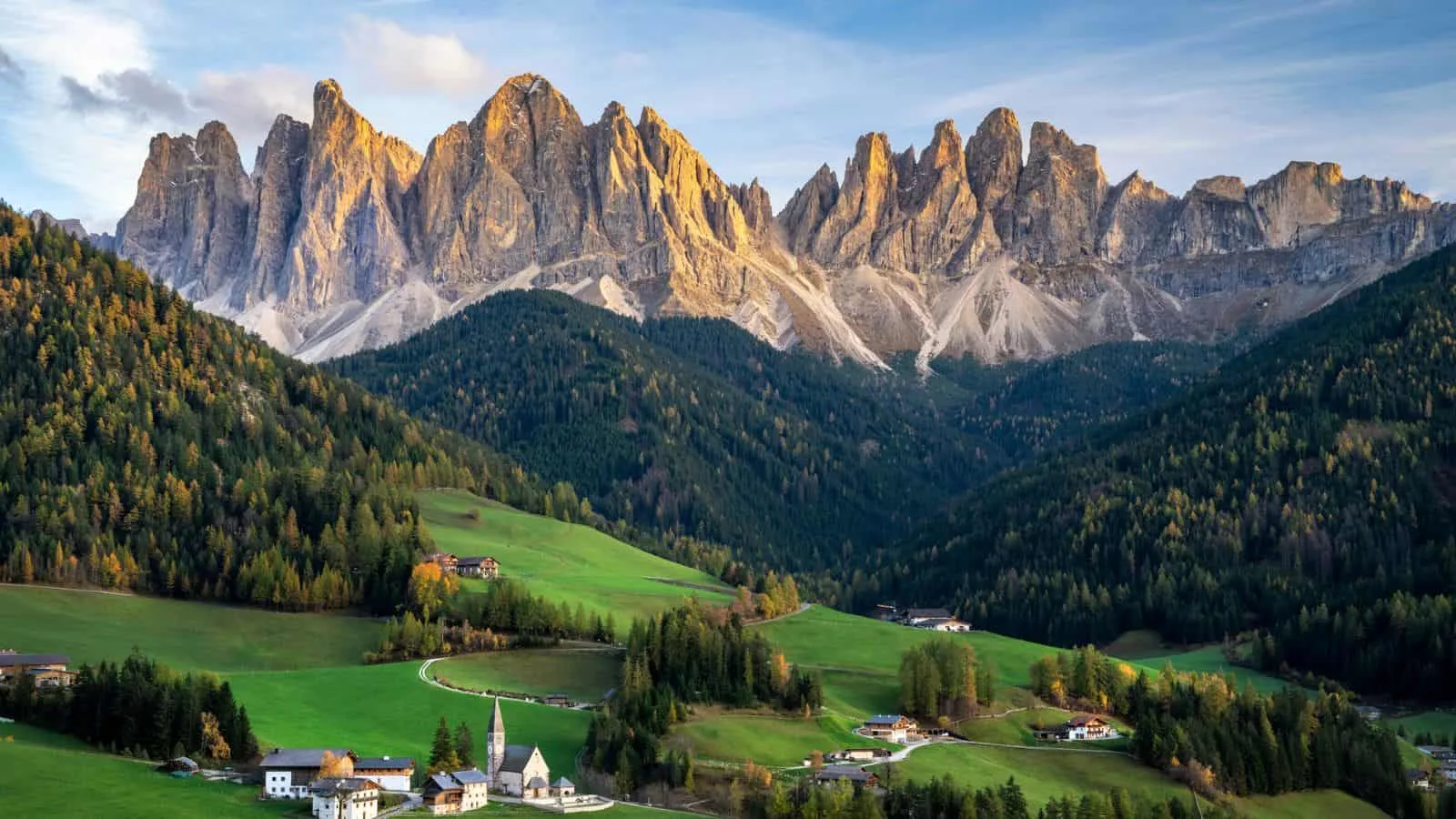
Europe is home to some seriously epic road trips. Traverse the mountains of Switzerland and experience the fantasy of Bavaria on these drives.
21 Epic Road Trips in Europe Worth the Steep Gas Prices

Elise Armitage is an entrepreneur and founder of What The Fab, a travel + lifestyle blog based in California. At the beginning of 2019, Elise left her corporate job at Google to chase her dreams: being an entrepreneur and helping women find fabulous in the everyday. Since then, she’s launched her SEO course Six-Figure SEO, where she teaches bloggers how to create a passive revenue stream from their website using SEO. Featured in publications like Forbes, Elle, HerMoney, and Real Simple, Elise is a firm believer that you can be of both substance and style.



